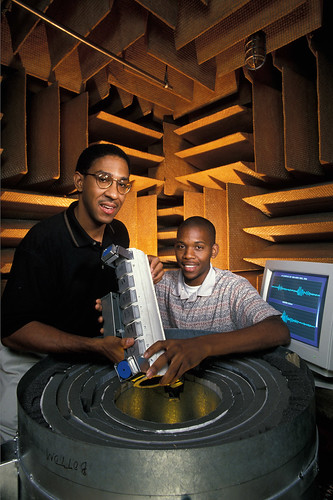
February is traditionally a month of celebration for our nation’s 1890 land-grant universities (LGUs) in commemoration of Black History Month. These institutions are historically-black universities that were established in 1890 under the Second Morrill Act. Now, as the month draws to an end, the 1890 LGUs are setting their sights on August 30, which marks the 125th anniversary of the Congressional action that created a network of historically black colleges and universities dedicated to providing educational opportunity for all through innovative scientific research and community-minded Extension programs.
“One of the ways we can best honor black history is by providing a proper foundation to support future achievement. Through federal funding and leadership for research, education and Extension programs, NIFA focuses on investing in science and solving critical issues impacting people's daily lives and the nation's future,” said Cathie Woteki, USDA’s Chief Scientist and Under Secretary for Research, Education, and Economics.
Today, there are 19 1890 land-grant universities in 18 states. Central State University in Ohio is the latest 1890 LGU, as established under the 2014 Farm Bill.
USDA’s National Institute of Food and Agriculture (NIFA) administers a number of 1890 LGU education grant programs that support projects that strengthen teaching, research, Extension, and facility programs in the food and agricultural sciences.
These include:
- The 1890 Institution Teaching, Research, and Extension Capacity Building Grants program that strengthen teaching and research programs in the food and agricultural sciences through cooperative linkages with federal and non-federal entities;
- The Evans-Allen 1890 Research Formula program that supports basic and applied research at the 1890 institutions in the food and agricultural sciences;
- The 1890 Extension Formula program that supports Extension education programs that respond to the changing needs of limited resource clientele; and
- The 1890 Facilities Grant program that provides funds for the acquisition and improvement of agricultural and food sciences facilities and equipment, including libraries, so that the institutions may participate fully in the production of human capital in the food and agricultural sciences.
The 1890 Institution Capacity Building Grants program has been the 1890 LGU’s “bread and butter,” according to Dr. Antoine Alston, professor at North Carolina A&T University and third-generation 1890 LGU graduate.
“Both as a student and faculty, I have been able to use NIFA funding to train farmers in Farmer Safety and have taught secondary agricultural Extension personnel about hydroponics technology,” he recalled. The 1890 LGUs, he said, are able to take a little and do a lot.
“Dedicated funding gave the 1890 land-grant universities an opportunity to specialize their research,” said McKinley Mayes, former coordinator of 1890 College Programs at NIFA’s forerunner agency, the Cooperative State Research Service. “For example, Lincoln University (Mo.) focused their research on human nutrition, Alcorn State University (Miss.) worked on aquaculture, and Fort Valley State University (Ga.) became known for goat research. This provided significant economic benefits for the local communities.”
NIFA's investment in research, education and Extension is helping to train tomorrow’s agricultural leaders and workers today. “The 1890 institutions are places of cutting-edge research and technology, no doubt, but they also empower limited-resource students and turn them into leaders,” Alston explained. “These are universities in the business of transforming lives.”
Through federal funding and leadership for research, education, and Extension programs, NIFA focuses on investing in science and solving critical issues impacting people's daily lives and the nation's future. For more information, visit www.nifa.usda.gov.

